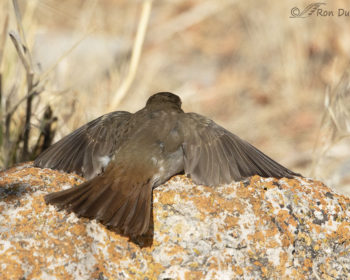Tag: rehabber
Does Anyone Know What’s Wrong With The Eye Of This Northern Harrier?
It’s very cold here in northern Utah (8 degrees F. as I type) and there’s lots of snow on the ground – ideal conditions for photographing hunting Northern Harriers. And yesterday morning everything was covered with a thick layer of hoar-frost which turned the marshes into a frosty fairyland. I was able to get lots of shots of this particular bird and in the field I didn’t even notice that there was anything unusual about it. Most of the images were flight shots and there just isn’t time pay attention to detail when you’re concentrating so hard on keeping the bird in the frame and in focus. But when I got home and started reviewing my images I was taken aback. Something’s definitely going on with the right eye of this bird. At first I thought it might be just the closed nictitating membrane but I have dozens of shots of this bird and the eye is the same in all of them. It’s definitely not a normal membrane, if it’s the membrane at all. A better look at the right eye. This is probably the sharpest, most detailed image I was able to get of the bird. An extreme crop of the previous image to show the best detail I could manage. To my untrained eye it looks like there may be some kind of fungal growth in and around the eye that may have discolored the eye ring and nictitating membrane and closed the membrane permanently, but that’s only a guess….
Another Positive Development Regarding Lost Falconry Birds
Just a quick post this morning to announce some more good news on the “lost falconry bird” front. (no, the female kestrel hasn’t yet been recaptured, but I believe efforts are continuing). For those new to this issue, a quick summary: Occasionally, falconry birds escape through no fault of the handler. When they do, they typically still have falconry gear attached – jesses, anklets, telemetry gear etc. Every effort is made by the falconry community to recapture these birds, usually with success. The larger segment of the problem comes from unethical “rogue” or “wannabe” falconers who capture wild birds illegally and then try to fly them without proper knowledge and experience. Due to negligence or inexperience these illegal birds sometimes escape with their “gear” attached, which puts them at a distinct disadvantage in the wild. My good friend and constant photography companion Mia McPherson and I have come across and photographed three of these escaped birds in the last three years. At least two of the three were most likely the result of rogue falconers rather than the organized falconry community. More details of what has already transpired can be found here. When someone spots one of these escaped birds in the wild, getting through to the “right” person for reporting and appropriate action is cumbersome, time-consuming and frustrating (believe me, I know!). It’s difficult to get through all the layers of DWR’s bureaucracy, finding a rehabber who can help isn’t easy and there hasn’t been an efficient avenue for a non-falconer to report a found bird to the falconry community. The North America Falconer’s Association (NAFA) website…


